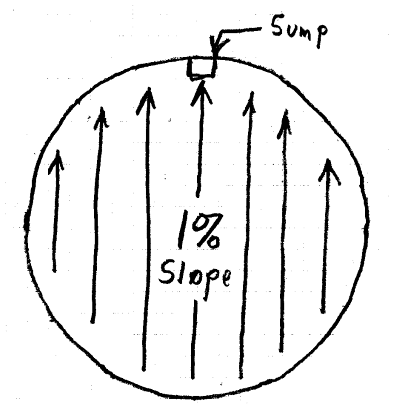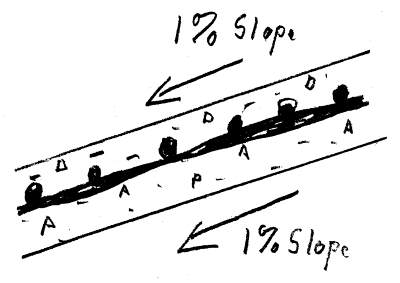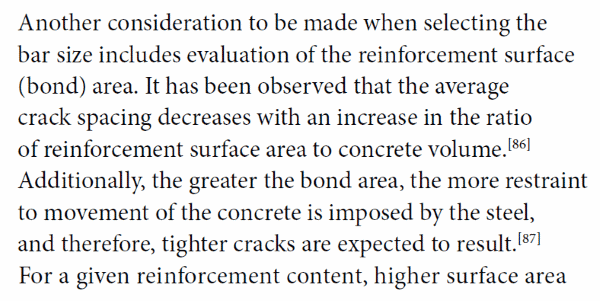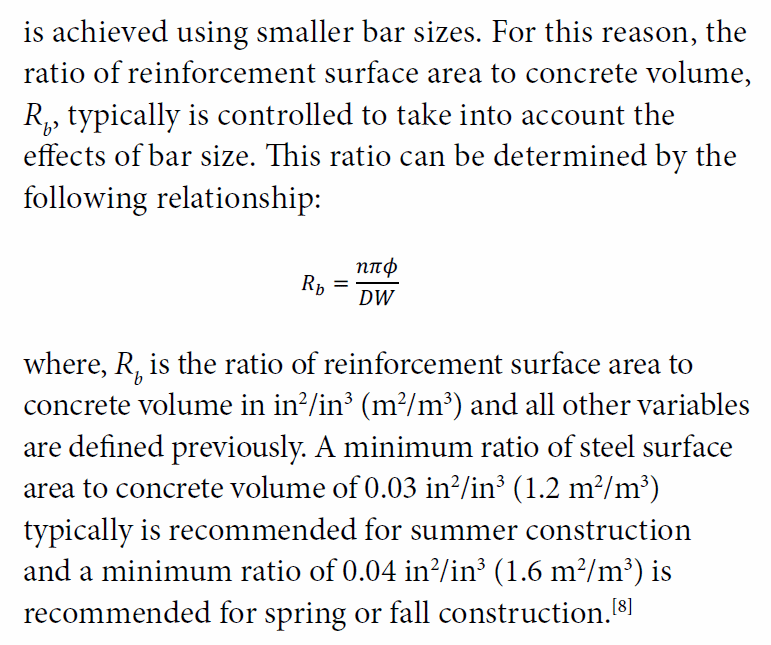Hi all,
I want to design a reinforced concrete base for an open top steel tank. The tank has a diameter of 25m and height of 2.9m. I am thinking about the base that is 150mm thick, thicker around the circumference. Most of the time the tank will be empty.
The maximum pressure that will be exerted on the ground will be not more than 40 kPa and moments in X and Y directions shouldn't exceed 10kNm/m. To simplify reinforcement installation I want to go with a standard mesh A393 at the top and bottom face and circumferential/radial reinforcement in the proximity of the circumference of this slab.
As you can see I get reinforcement density in the slab of 2x393/(150x1000)=0.524%. The concrete will be poured in temperature of 10 Celsius degrees and I don't expect it to heat in the summer to more than 40 Celsius.
Here I would be grateful if you can answer my questions:
1. What is the best pouring schedule here? I though about dividing the circle into heactagonal and pouring 4 in one day and 4 on the next.
1. What is the best way to create gradient on the floor as I need a liquid to drain towards specific location? Would it be benching?
2. Would you use contraction joints here? If yes, at what spacing?
3. Would you use expansion joints? The linear expansion seems to be about 1cm if I take t0=10 and tfinal 40.
Thank a lot,
Jed
I want to design a reinforced concrete base for an open top steel tank. The tank has a diameter of 25m and height of 2.9m. I am thinking about the base that is 150mm thick, thicker around the circumference. Most of the time the tank will be empty.
The maximum pressure that will be exerted on the ground will be not more than 40 kPa and moments in X and Y directions shouldn't exceed 10kNm/m. To simplify reinforcement installation I want to go with a standard mesh A393 at the top and bottom face and circumferential/radial reinforcement in the proximity of the circumference of this slab.
As you can see I get reinforcement density in the slab of 2x393/(150x1000)=0.524%. The concrete will be poured in temperature of 10 Celsius degrees and I don't expect it to heat in the summer to more than 40 Celsius.
Here I would be grateful if you can answer my questions:
1. What is the best pouring schedule here? I though about dividing the circle into heactagonal and pouring 4 in one day and 4 on the next.
1. What is the best way to create gradient on the floor as I need a liquid to drain towards specific location? Would it be benching?
2. Would you use contraction joints here? If yes, at what spacing?
3. Would you use expansion joints? The linear expansion seems to be about 1cm if I take t0=10 and tfinal 40.
Thank a lot,
Jed


![[idea] [idea] [idea]](/data/assets/smilies/idea.gif)



